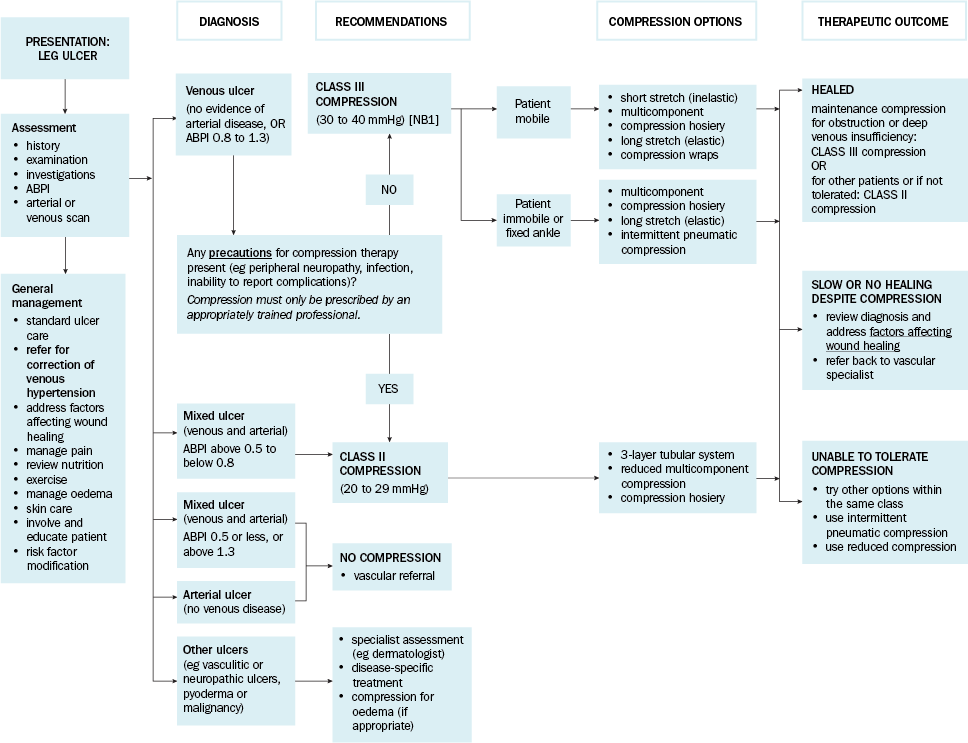Overview
Standards of compression vary internationally. For simplicity, classes of compression are defined in this guideline as shown in Definition of compression classes used in this guideline.
- class I provides less than 20 mmHg of compression at the ankle
- class II provides 20 to 29 mmHg of compression at the ankle
- class III provides 30 to 40 mmHg of compression at the ankle
Examples of compression therapy include compression bandages, compression stockings, wrap systems and biomechanical devices. In general, a pressure of 30 to 40 mmHg at the ankle, reducing by 50% below the knee is considered optimal for treating venous disease. Therefore, for treatment of a venous leg ulcer, class III compression is recommended, though patient comorbidities (particularly peripheral arterial disease, cognition) and tolerability of compression must be considered; see Venous leg ulcers and Precautions for use of compression therapy.
For use of compression for other indications, seek specialist advice.
[NB1]

ABPI = ankle brachial pressure index
NB1: Patients may need to use a lower class of compression (ie class II compression) initially for tolerability, and escalate to class III compression as pain and inflammation resolve.
Adapted with permission from Royal Melbourne Hospital Royal Park Chronic Wound Service, 2005.
